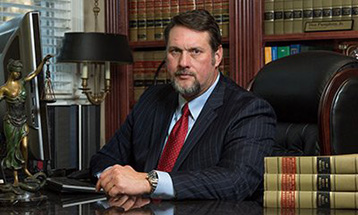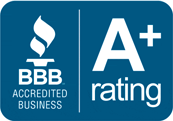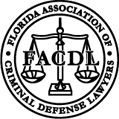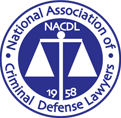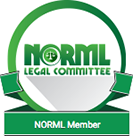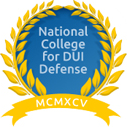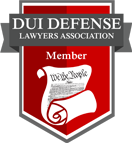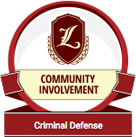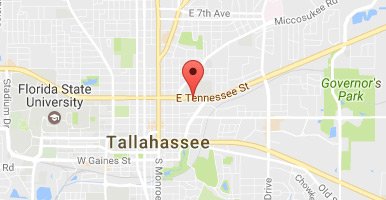- DUI
- Criminal Defense
- Florida DUI
- Traffic Offenses
- Drug Charges
- Marijuana Charges
- Violent Crimes
- Domestic Violence
- Temporary Injunctions
- Weapons Charges
- Theft Crimes
- White Collar Crime
- Juvenile Offenses
- Sex Crimes
- Violation of Probation
- Early Termination of Probation
- Seal or Expunge Criminal Record
- Criminal Appeals
- US Federal Offenses
- Misdemeanor Charges
- Felony Charges
- Co-Defendant Cases
- College Student Defense
- College Student Hearings
- FSU Students
- FAMU Students
- Florida Panhandle Arrests
- Extradition to Florida
- Bench Warrants / Warrants
- Emergency Bond Hearings
- Gambling Charges
- Drone Arrests
- Marsy’s Law
- UAS Infractions
- Introduction of Contraband
- Lying to Police
- Locations
- Case Results
- Our Firm
- Media
- Resources
- Blog
- Contact Us
Motion for Mistrial in Parkland Trial Over Swastikas
September 7, 2022 Don Pumphrey, Jr. Criminal Defense, News & Announcements Social Share
In February of 2018, Nikolas Cruz, 19, took many lives when he opened fire on the students and faculty of Marjory Stoneman Douglas High School in Parkland, Florida. Cruz, who fled the scene, was later arrested without incident.
We have been covering the trial that ensued, discussing various issues like social media, gun laws, jury selection, juror misconduct, attorney issues, harassment, and previous attempts to move for a mistrial.
We will now cover some of the recent events, as well as explain how excluding overly prejudicial evidence works.
Where is the Trial Now?
In October, Cruz pled guilty to the charges. This trial is purely to determine Cruz’s sentence – either capital punishment or life without parole. In order to impose capital punishment, the jury must return a unanimous verdict.
Cruz’s public defenders are now into week two or presenting mitigating testimony about Cruz’s hard childhood, to be born to a drug-addicted mother who was in sex work and then later put him up for adoption, to a childhood that, according to testimony, was filled with mental and emotional trauma.
The defense counsel’s strategy is targeted at combating the prosecution’s graphic, upsetting, and emotionally stirring testimony presented over the past three weeks regarding Cruz’s planning and administration of the killings.
Prejudicial Evidence
As the presentation of mitigating testimony progresses, another issue has cropped up – a motion for mistrial. Cruz’s attorneys attempted to preclude from evidence many swastikas that Cruz had drawn on assignments claiming that Cruz was “an equal opportunity killer who shot his victims without regard to race or religion.” The attorneys further argued that a swastika digs up such deep and powerful emotion in Americans that allowing the juror to see Cruz’s drawings would violate his due process rights to a fair trial since it would be the only piece of evidence that his mass shooting was fueled by bigotry. Of those killed, there were white, Black, Hispanic, Asian, Christian, and Jewish individuals, as argued by his attorneys.
The attorneys then admonished the overseeing judge, Circuit Judge Elizabeth Sherer, who had not ruled previously on the admittance of the swastika. Defense counsel told the judge that her failure to rule any way on it affected their jury selection and trial strategies. Then, they asked for a mistrial. In response, Judge Scherer rejected their argument as “disingenuous.” To substantiate her response, she and the prosecutors on the case pointed to other drawings made by Cruz that included racial epithets against Black people, which defense counsel did not have a problem with admitting.
The swastikas in question were scribbled onto Cruz’s English assignments. Defense counsel requested that the symbols be blacked out while simultaneously admitting, without complaint, the other racially insensitive drawings. Judge Scherer denied the defense counsel’s request to black out the swastikas. The jury saw them when the assignments were presented, but neither the defense nor the prosecution discussed them specifically.
Other assignments also had troubling images. Carrie Yon, one of Cruz’s eighth-grade teachers, was the one who had received the assignments back with the drawings. She turned the assignments over to the authorities after the shooting. She testified on Thursday that she would regularly return students’ work but kept Cruz’s assignments because she was worried about his behavior and wanted to document it. On other assignments, Cruz wrote obscenities, slurs about the LGBTQIAA+ community, sexually graphic images, and phrases like “I hate you. I hate America.”
Yon has tried to work with Cruz through positive reinforcement, but Cruz would only reply “I’m a bad kid. I want to kill.” in response to any compliments given. This behavior culminated in Yon writing an assessment to the school stating “I strongly feel Nikolas is a danger to the students and faculty at this school. He does not understand the difference between his violent feelings and reality.”
The Exclusion of Overly Prejudicial Evidence
Though Cruz’s lawyers were denied their request by Judge Scherer, there is a basis in the law for precluding evidence likely to stir intense emotion in jurors. Florida Statute Section 90.403 covers the exclusion of evidence on the grounds of prejudice or confusion, stating “Relevant evidence is inadmissible if its probative value is substantially outweighed by the danger of unfair prejudice, confusion of issues, misleading the jury, or needless presentation of cumulative evidence. This section shall not be construed to mean that evidence of the existence of available third-party benefits is inadmissible.”
So, the argument to exclude relevant evidence under this statute would be that the probative value, or the usefulness of the evidence, is substantially outweighed by its prejudicial value, or likelihood to result in some type of unfairness.
But not all prejudicial evidence is deemed to be unfairly prejudicial. A lot of evidence presented in criminal trials can be considered “prejudicial” because it shines an unfavorable light on the defendant. The prejudicial evidence that gets barred is evidence that pushes the jurors to consider impermissible issues when making their decision, these tend to be unrelated to the ultimate issue to be decided.
Tallahassee Criminal Defense Attorney
The presentation of evidence is a critical issue in criminal cases. The best way to build and present a strong defense is with the help of a knowledgeable criminal defense attorney. If you or a loved one has been charged with a crime in Florida, focus on retaining an experienced and qualified Tallahassee criminal defense attorney. Don Pumphrey and the members of the legal team at Pumphrey Law Firm have the experience and passion to ensure that all defenses are explored in your or a loved one’s favor. Call us today at (850) 681-7777 or send an online message to discuss your case during an open and free consultation with an attorney in our legal team.
Written by Gabi D’Esposito

